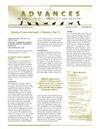Gastrointestinal Parasites of Non-descript Goats (capra hircus) in Semi-Arid Zone of Southern India
Q4 Veterinary
引用次数: 0
Abstract
The current study was conducted to know the occurrence of gastrointestinal parasitism in two semi-intensive goat farms owned by small-scale farmers of Puducherry, a semi-arid zone of Southern India. The primary aim of this study was to identify the gastrointestinal parasites in non-descript goats of selected farms in Puducherry, a semi-arid zone of Southern India. The samples included 18 goats from Thirukkanur farm, and 7 goats from Kombakkam farm. The goats had a history of recurrent diarrhea, improper vaccination, and deworming status. There was no information on treatment history. Fresh fecal samples (n = 25) were collected per rectum from the non-descript goats belonging to different age groups and sex. The collected fresh fecal samples were processed by qualitative fecal examination, such as direct smear examination, sedimentation, and flotation techniques. Of 25 fecal samples, 23 (92%) samples were found positive. Upon microscopic examination, different gastrointestinal parasites in the non-descript goats of the targeted area include Strongyles (68%), Amphistomes (48%), Strongyloides spp. (36%), Moniezia spp. (8%), and Trichuris spp. (4%). A higher incidence of gastrointestinal parasites was found in the non-descript goats of the study location. Among these, nematodes constitute about (Strongyles, Strongyloides spp., Trichuris spp.) 80%, trematode (Amphistomes) 12%, and cestode (Moniezia spp.) 8% were found to be predominant. It is reported that among all the gastrointestinal parasites, the nematode strongyle infection is higher in non-descript goats.印度南部半干旱区无特征山羊胃肠道寄生虫
目前的研究是为了了解印度南部半干旱地区Puducherry小农拥有的两个半集约化山羊养殖场胃肠道寄生虫病的发生情况。本研究的主要目的是在印度南部半干旱区普杜切里选定的农场中鉴定非描述山羊的胃肠道寄生虫。样本包括来自Thirukkanur农场的18只山羊和来自Kombakkam农场的7只山羊。山羊有反复腹泻史、接种不当和驱虫情况。没有关于治疗史的信息。从不同年龄和性别的非描述性山羊的每个直肠收集新鲜粪便样本(n = 25)。采集的新鲜粪便标本采用直接涂片检查、沉淀法、浮选法等定性粪便检查方法进行处理。在25份粪便样本中,23份(92%)呈阳性。镜检结果显示,目标地区山羊胃肠道寄生虫主要有圆形虫(68%)、片口虫(48%)、圆形虫(36%)、念珠虫(8%)和滴虫(4%)。胃肠道寄生虫的发病率在研究地点的非描述性山羊中发现较高。其中线虫类(圆孔类、圆孔类、毛线虫类)占80%,吸虫类(两栖类)占12%,绦虫类(滴虫类)占8%。据报道,在所有胃肠道寄生虫中,非特种羊的线虫感染率较高。
本文章由计算机程序翻译,如有差异,请以英文原文为准。
求助全文
约1分钟内获得全文
求助全文
来源期刊

Advances in Small Animal Medicine and Surgery
Veterinary-Small Animals
自引率
0.00%
发文量
0
期刊介绍:
Each month, Advances in Small Animal Medicine and Surgery features abstracts of material from recent publications and presentations, followed by comments from specialists in the field. Small animal veterinarians and veterinary technicians gain new insight into specific topics and increase their skills in judging how to apply new tests and treatments in practice situations.
 求助内容:
求助内容: 应助结果提醒方式:
应助结果提醒方式:


